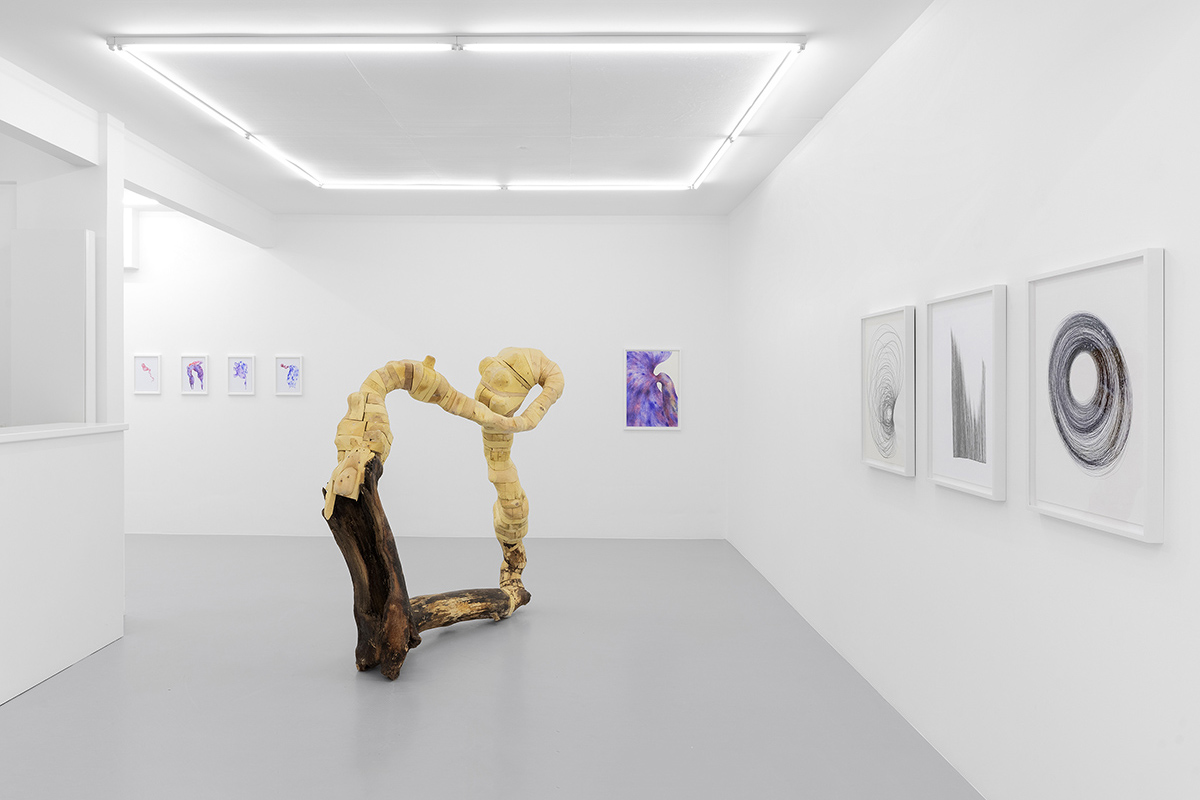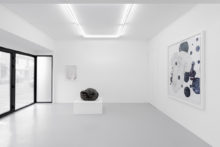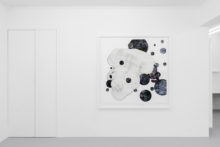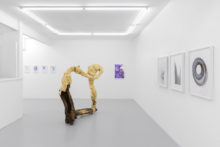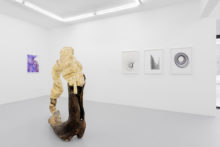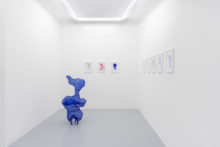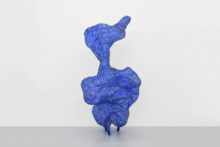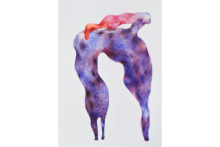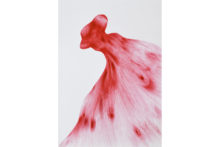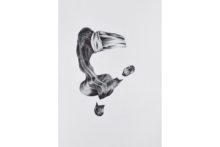Tatiana Wolska
We are delighted to present Meta-Morphosis, Tatiana Wolska‘s fourth personal exhibition at Irène Laub gallery. This multi-faceted show proposes a dialogue between the artist’s last works on paper and sculptural pieces made of wood, ceramic, plastic and nails, as well as a monumental wall drawing.
Conversation between Tatiana Wolska and Louma Salamé,
director of the Boghossian Foundation – Villa Empain (Brussels, BE) on 18/02/22
Tatiana, I would like to start by talking about your favourite materials: I have the impression that recycled wood was your first medium and that you then discovered other found materials.
Yes, indeed, I started with wood and plastic bottles – anything I could find directly on the street. I’ve always drawn alongside this sculptural practice. I draw every day, constantly, mainly with pen and pencil. For the last two years, I have also been working with clay, which is closer to a drawing because I can handle it directly as I handle the sheet of paper and the pen.
You often exploit the unsuspected potential of unusual materials. If the question of the availability and price of materials was not an issue, are there any materials that you would like to try?
Sometimes, I’m almost jealous of artists who create incredible things with marble, granite, or even just oil paint. However, I really like the idea of not buying, ordering or shipping anything!
You have always created organic forms, sometimes monumental like the sculpture at the Palais de Tokyo or the tree house at Villa Empain. They take possession of the space, you can walk around them and go inside of the structure. Does this fascination with the relationship between the interior and exterior come from your drawing practice?
My works never start from sketches, nor do I have a defined form in mind, which allows me to be surprised by the shape that emerges. It is very rare, but I sometimes have a precise starting point. For example, in the case of the main wooden sculpture in this exhibition, I started with the general idea of a Möbius strip, a shape that turns in on itself and in which there is no distinction between inside and outside. Most of the time I don’t have a specific idea, I start the shape and it leads me somewhere.
In your sculptures in particular, you often create things that are bigger than you, whose dimensions exceed your own scale.
Yes, unfortunately… Monumentality, especially in sculpture, presents a kind of challenge in the creation process. However, and I think it’s the case for many artists, I am limited by the places where I live and work. There is a certain frustration because I am not actually a city artist! I love to work outside, I love big sculptures and I’m thinking more and more about going somewhere in the countryside or in the mountains and having all the space I need to express myself.
But I sometimes spend weeks creating drawings, mainly small ones, and I look at them with a feminist perspective. I see them as housework, interspersed between my daily obligations. For example, when my daughters were very small, I started a series of sewn works and bought a silent sewing machine so that I wouldn’t disturb them. These small formats that I make daily are important to me despite their size, they are acknowledged and taken into consideration.
Indeed, these drawings are not negligible, they are at the heart of your work even if they have a more domestic, more modest and traditionally feminine dimension. There is a duality between these rather intimate works and your desire to confront nature or materials that go beyond you.
Drawing also gives me a certain balance, it allows me to express myself in a direct way and to satisfy my compulsive nature. I draw constantly and with these drawings I can try things out, mess around and make the forms evolve without being afraid of messing anything up. Drawing and sculpture are always interwoven.
Read more about Tatiana Wolska
